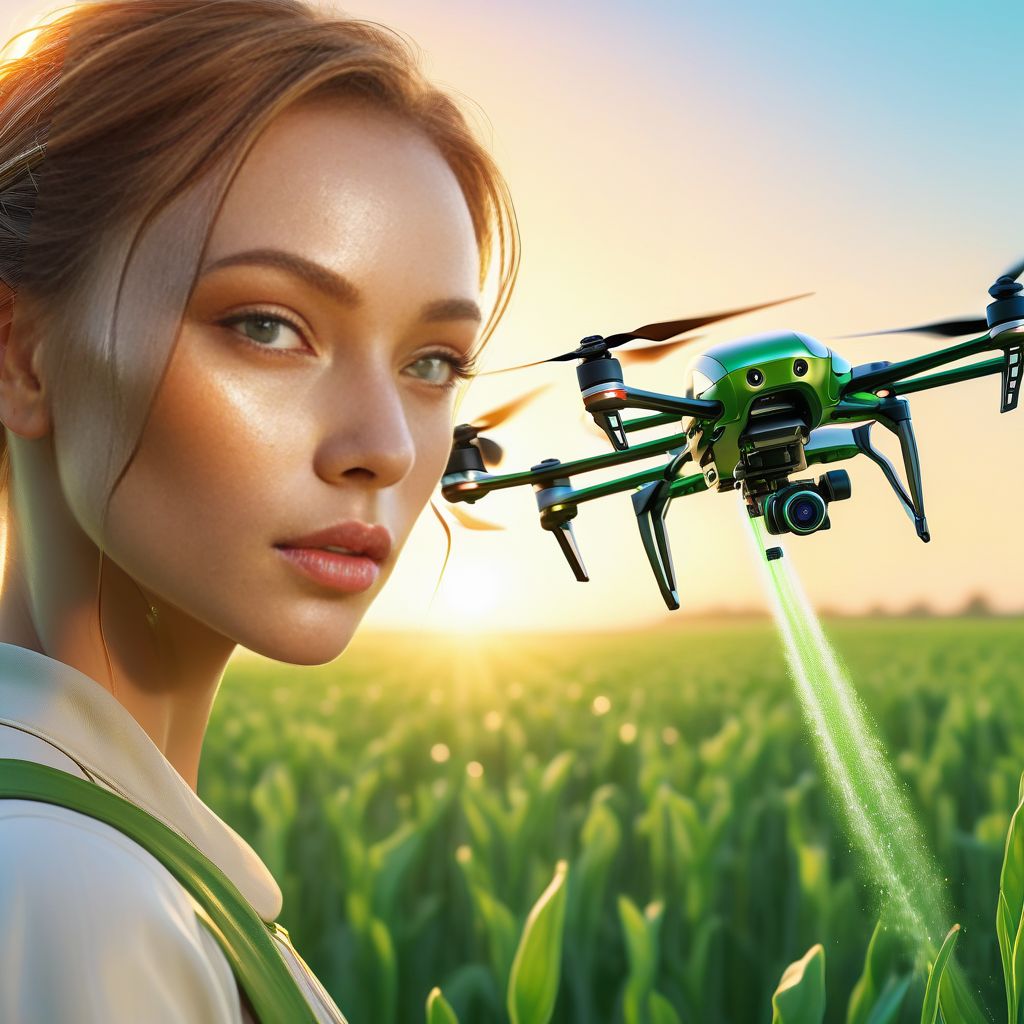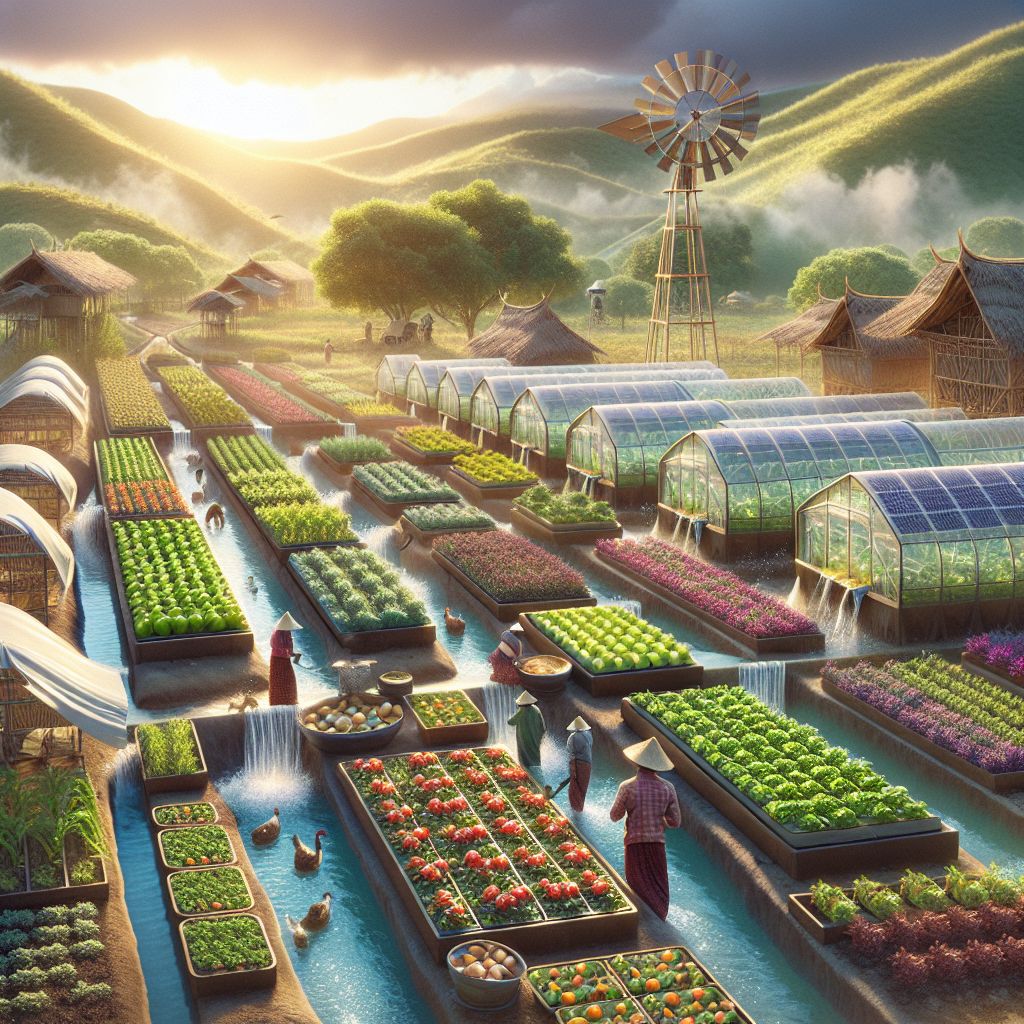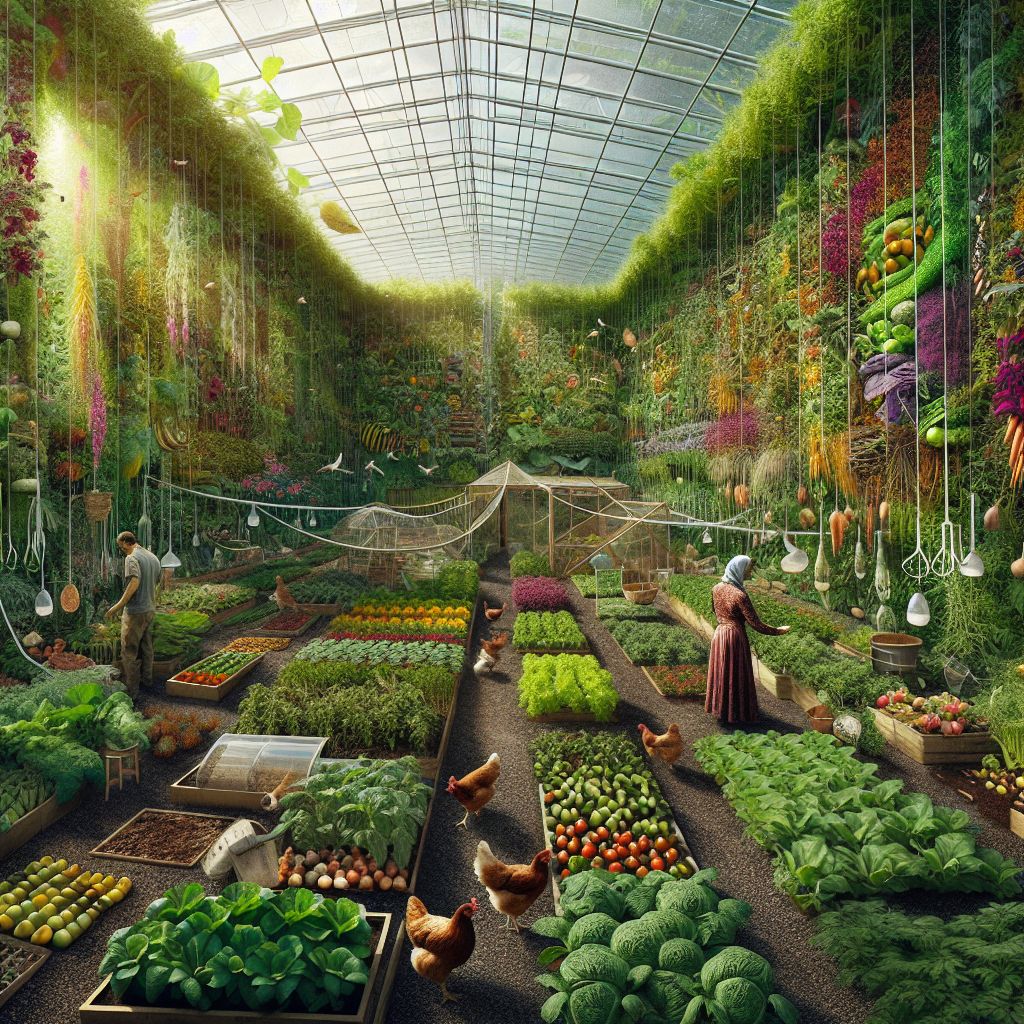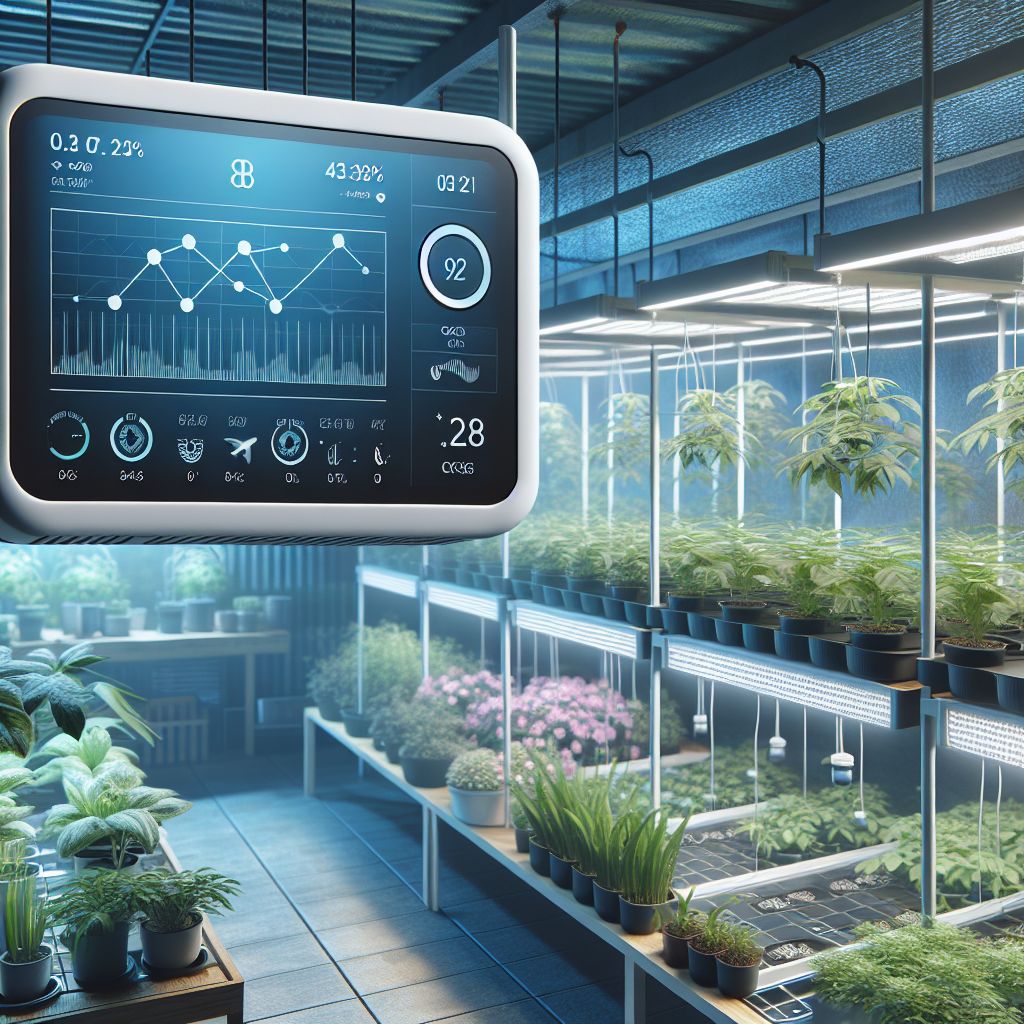Key Takeaways
-
Understanding the importance of temperature in farming can prevent crop loss and maximize yields.
-
Smart agriculture temperature alert systems notify farmers of high and low temperature extremes, enabling swift action.
-
Choosing the right sensors and placing them strategically is crucial for effective temperature monitoring.
-
Responding quickly to temperature alerts can protect crops and livestock from damage.
-
Learning from historical temperature data can improve long-term agricultural strategies.
Why Temperature is a Make-or-Break Factor in Farming Success
When it comes to farming, temperature isn’t just a number on a thermometer—it’s the heartbeat of your crop’s environment. Too hot or too cold, and your plants can suffer, leading to reduced yields or even total loss. That’s why it’s critical to keep a close eye on temperature conditions. With smart agriculture temperature alert systems, you can do just that. These systems provide real-time updates on temperature changes, so you can take action before it’s too late.
Core Principles of Smart Agriculture Temperature Alert Systems
At its core, a smart temperature alert system is like a good friend who’s always looking out for your crops. It uses sensors to constantly monitor the temperature of your fields or greenhouses. If the temperature drifts into the danger zone, the system sends you an alert. This can be a text, an email, or a notification on your smartphone, meaning you’re always in the loop, no matter where you are.
Most importantly, these systems are proactive. Instead of reacting to problems after they’ve caused damage, you’re equipped to take preventive measures. This could mean turning on irrigation systems to cool down crops, closing greenhouse vents to trap heat, or taking other actions to stabilize the environment.
Protecting Your Crops Against Temperature Extremes
Let’s face it, weather is unpredictable. But with a temperature alert system, you’re always one step ahead. Here’s how you can protect your crops from the whims of Mother Nature:
-
High-Temperature Protection: When the sensors detect a temperature spike, you can respond by increasing shading, boosting irrigation, or adjusting ventilation to cool your crops.
-
Low-Temperature Defense: If a cold snap is on the horizon, the system’s alerts can prompt you to deploy frost protection measures like row covers, heaters, or wind machines to keep the chill at bay.
By taking these actions, you’re not just saving your current crop—you’re also protecting the long-term health of your soil and the viability of future plantings. Learn more about temperature monitoring for the best agricultural output.
Smart Sensing: The Backbone of Modern Farming
Smart sensing technology is increasingly becoming a critical component in modern agriculture. By leveraging advanced sensors, farmers can now monitor various environmental conditions that directly affect crop health and yield. For instance, temperature monitoring plays a pivotal role in ensuring the best agricultural output, as extreme temperature fluctuations can have a detrimental effect on plant growth. Smart sensors provide real-time data, enabling farmers to make informed decisions and take immediate action to protect their crops.
Smart sensors are the eyes and ears of your operation. They’re placed in key locations throughout your farm to monitor conditions and gather data. But it’s not just about collecting information; it’s about making sense of it. These sensors feed data into a central system that analyzes it and sends you actionable insights.
For example, a sensor might detect a temperature rise that’s not yet critical but could become a problem if the trend continues. The system can alert you to this potential issue, giving you time to plan your response.
And it’s not just temperature—many systems can track humidity, soil moisture, and other environmental factors that influence crop health. With this kind of comprehensive monitoring, you’re always in control.
The Tech Behind Smart Temperature Alerts
The technology that powers these alert systems is pretty impressive. At the heart of it all is the Internet of Things (IoT). This is the same technology that lets you turn on your home lights from your phone. In agriculture, IoT connects your sensors to the cloud, where powerful algorithms analyze the data. Then, through machine learning, the system gets smarter over time, fine-tuning its alerts to match the specific needs of your farm.
Installing the Right Sensors for Your Farm
But how do you get started? First, you need to choose the right sensors. Not all sensors are created equal, and the best one for your farm will depend on a few factors:
-
Type of crop: Different crops have different temperature sensitivities.
-
Size of your operation: The larger your farm, the more sensors you’ll need to cover it effectively.
-
Your climate: If you’re in an area with high temperature variability, you’ll need a system that can react quickly to changes.
Once you’ve selected your sensors, it’s time to place them. You want to ensure they’re in locations that provide a representative sample of conditions across your farm. This might mean placing them at different heights, in various types of terrain, or near particular crops that are especially sensitive to temperature changes. For more details on sensor placement and installation, consider reading this wireless temperature sensor installation guide.
Thriving Farms Using Temperature Alert Systems
Modern farms are increasingly turning to technology to ensure optimal growing conditions. One key innovation is the use of temperature alert systems that help farmers prevent damage to crops from extreme weather conditions by providing timely alerts.
How a Small Orchard Increased its Yield
Consider the story of a small orchard in the heartland of America. This orchard was frequently hit by unexpected frosts that damaged the delicate blossoms of their fruit trees. After installing a smart temperature alert system, the orchard’s fortunes began to change. Sensors placed throughout the orchard monitored the temperature and, when a sudden drop was detected, the system sent out an alert. The farmers were able to respond swiftly, using frost protection techniques such as overhead sprinkling and wind machines to keep the air moving and the frost at bay.
“Thanks to the temperature alert system, we were able to act quickly and save our blossoms. This season, we saw a 20% increase in yield compared to previous years,” shared the orchard owner.
The success of this orchard illustrates the transformative power of smart agriculture technology. By staying alert to temperature changes, they were able to protect their investment and reap the benefits of their labor.
Greenhouse Magic: Precision Climate Control Success
For those looking to delve deeper into the world of advanced greenhouse cultivation, understanding the nuances of precision climate control is essential for success.
Another shining example comes from a high-tech greenhouse operation. They employed a sophisticated temperature alert system with sensors that regulated not only temperature but also humidity and light levels. The system was programmed to adjust the internal climate of the greenhouse automatically, ensuring that plants received optimal growing conditions at all times.
“Our temperature alert system is like autopilot for the greenhouse. It takes the guesswork out of climate control and allows us to focus on other aspects of the business,” remarked the greenhouse manager.
This greenhouse’s story demonstrates how temperature alert systems can do more than just prevent damage—they can also optimize conditions for plant growth, leading to healthier plants and better yields.
Choosing the Best Temperature Alert System for Your Farm
Important Features to Consider
When you’re in the market for a temperature alert system, there are several features you’ll want to keep in mind:
-
Accuracy: The system should provide precise temperature readings.
-
Real-time alerts: It should send immediate notifications when temperatures reach critical levels.
-
Scalability: The system should be able to grow with your operation.
-
User-friendly interface: You’ll want a system that’s easy to use and understand.
-
Integration capabilities: It should work well with other systems and technologies you have in place.
These features are the backbone of an effective temperature alert system. They ensure that you’re equipped to handle temperature extremes and protect your crops.
Vetting Vendors and Platforms
Once you know what you’re looking for, it’s time to choose a vendor. This decision is as important as selecting the system itself. You want a reliable partner who will support you through installation, troubleshooting, and any upgrades you might need in the future. Here are a few steps to take when vetting vendors:
-
Read reviews and ask for references.
-
Check their track record for reliability and customer service.
-
Make sure they offer robust support and training.
-
Look for vendors who understand agriculture and are passionate about helping farmers succeed.
Choosing the right vendor is like picking a teammate—you want someone who’s in it for the long haul and will help you make the most of your temperature alert system.
Beyond the Alerts: Analyzing and Using Temperature Data
Understanding Weather Patterns and Trends
Temperature alerts are invaluable for immediate action, but the data they provide can also be used for long-term planning. By analyzing temperature trends over time, you can start to see patterns that could influence your planting schedules, crop selection, and resource allocation. This understanding can lead to better decision-making, ensuring that you’re always one step ahead of the weather.
Adapting Farming Practices Through Historical Data
Historical data is like a treasure trove of insights. It tells the story of how your crops have reacted to different temperature conditions in the past. With this information, you can tweak your farming practices to better suit the climate trends in your area. Perhaps you’ll discover that planting a few weeks earlier or later could help you avoid the worst of the temperature extremes. Or you might find that certain crops are more resilient and could be a better fit for your farm.
Frequently Asked Questions (FAQ)
How Do Smart Temperature Alert Systems Save Costs?
Smart temperature alert systems can save costs by preventing crop loss due to unexpected temperature fluctuations. They allow farmers to take timely action to mitigate risks, such as activating frost protection measures or adjusting irrigation to cool down crops. This proactive approach can lead to significant savings by ensuring high-quality yields and reducing the need for costly emergency interventions.
What Is the Role of AI and Machine Learning in Temperature Monitoring?
The integration of AI and Machine Learning in temperature monitoring is becoming increasingly significant in the context of smart agriculture. These technologies are pivotal in analyzing weather patterns and providing actionable insights for farmers to optimize crop yield and reduce risks associated with extreme temperature fluctuations.
AI and machine learning play a pivotal role in temperature monitoring by analyzing vast amounts of data to identify patterns and predict future conditions. These technologies can optimize the timing of alerts and enhance decision-making, ensuring that farmers receive the most relevant and timely information to protect their crops.
AI-driven systems can also learn from historical data to improve their accuracy, making them an indispensable tool for modern farmers.
“Our smart system learned from last year’s heatwave and adjusted our alerts to be more sensitive to rising temperatures. It was like having a personalized weather forecast for our farm,” a vineyard owner explained.
Can These Systems Be Used for Both Open Fields and Greenhouses?
Absolutely. Smart temperature alert systems are versatile and can be adapted to various agricultural settings, including open fields and controlled environments like greenhouses. In open fields, they help monitor and respond to natural weather fluctuations. In greenhouses, they play a crucial role in maintaining an ideal microclimate for optimal plant growth.
How User-Friendly Are Smart Agriculture Temperature Alert Platforms?
Modern smart agriculture temperature alert platforms are designed with the user in mind. They typically feature intuitive interfaces that make it easy for farmers to monitor conditions, receive alerts, and analyze data without needing advanced technical skills. User-friendliness is a key factor in the adoption and effective use of these systems.
-
Clear dashboard displays
-
Simple setup processes
-
Easy-to-understand alerts and reports
What Should Be the First Step After Receiving a Temperature Alert?
When you receive a temperature alert, the first step is to assess the situation. Check the real-time data to understand the severity and potential impact. Then, based on the type of alert—high or low temperature—activate your pre-planned response measures. This might involve turning on irrigation systems, deploying frost protection, or adjusting greenhouse climate controls. Quick and decisive action is essential to protect your crops.





